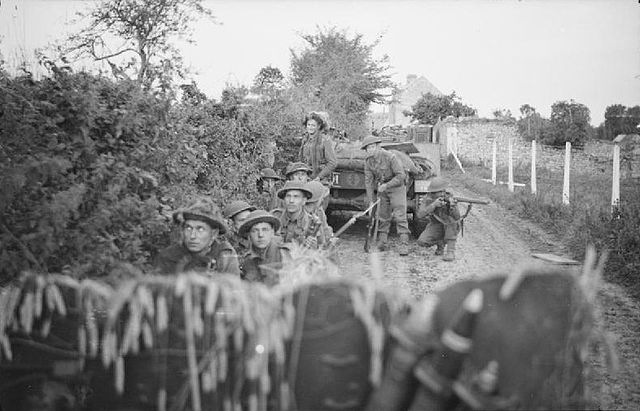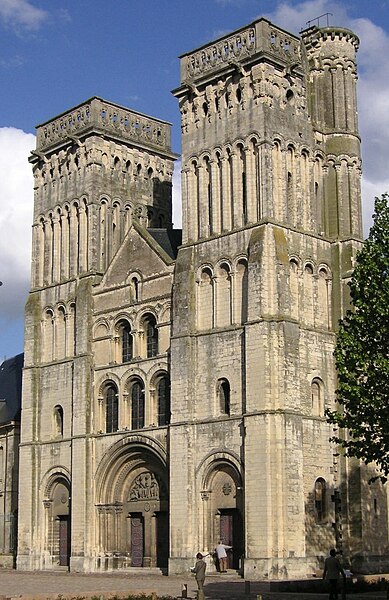The Battle for Caen is the name given to fighting between the British Second Army and the German Panzergruppe West in the Second World War for control of the city of Caen and its vicinity during the larger Battle of Normandy. The battles followed Operation Neptune, the Allied landings on the French coast on 6 June 1944 (D-Day).
D-Day landing beaches and German counter-attacks, 6 June 1944
An ammunition carrier of the 11th Armoured Division explodes after being hit by a mortar round during Operation Epsom on 26 June 1944.
Soldiers of the 43rd Wessex Division seek shelter from German mortar attacks, 10 July.
A German Sd. Kfz. 231 (8-rad) heavy reconnaissance vehicle of the 12th SS Panzer Division Hitlerjugend navigates the ruins of Caen in July, 1944. The heavily damaged Church of Saint-Pierre is visible in the background.
Caen is a commune 15 km (9.3 mi) inland from the northwestern coast of France. It is the prefecture of the department of Calvados. The city proper has 105,512 inhabitants, while its functional urban area has 470,000, making Caen the second largest urban area in Normandy and the 19th largest in France. It is also the third largest commune in all of Normandy after Le Havre and Rouen.
Image: Mairie de Caen 7
Image: France Caen Trinite c
Image: Caen, Église Saint Pierre 01
Image: Rue Froide de Caen 2017








